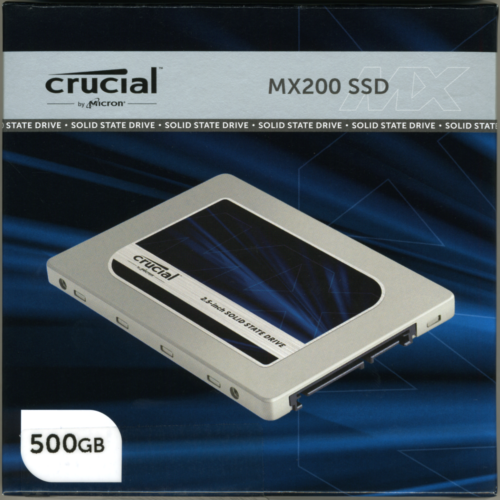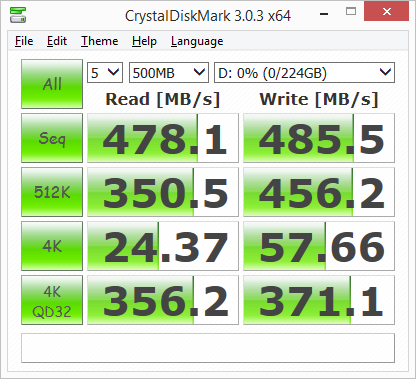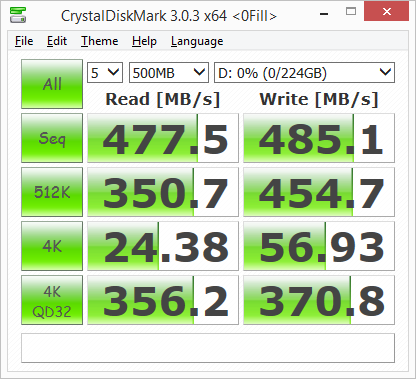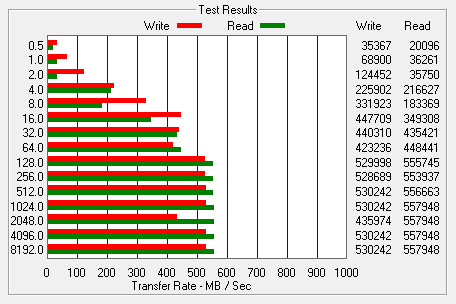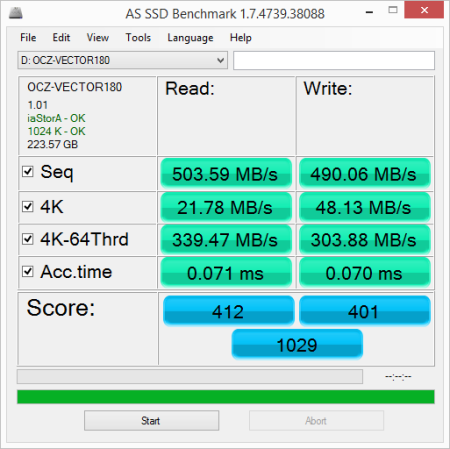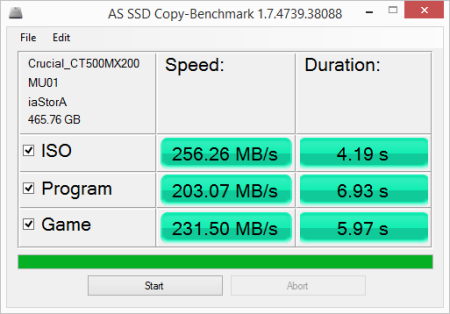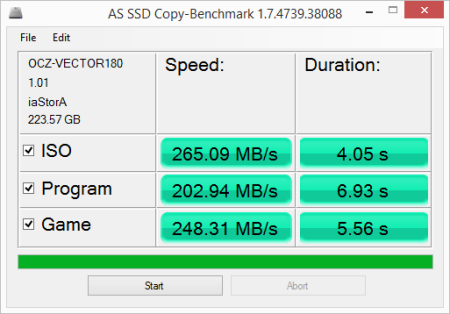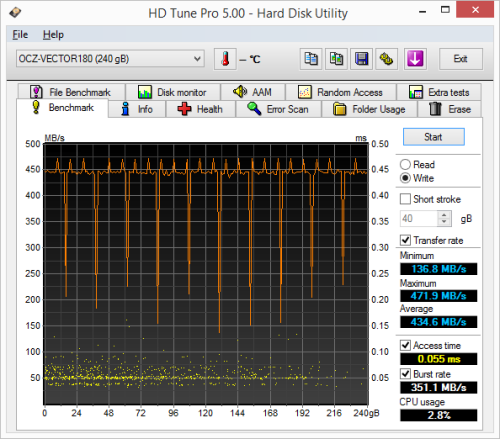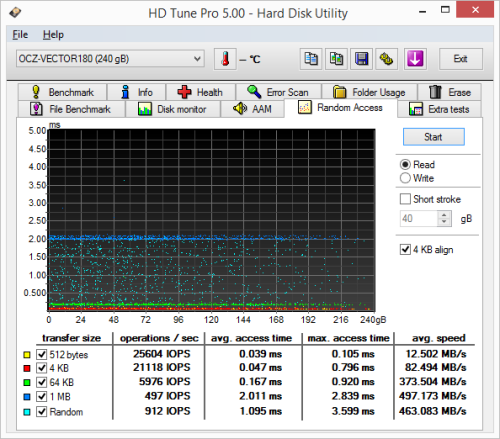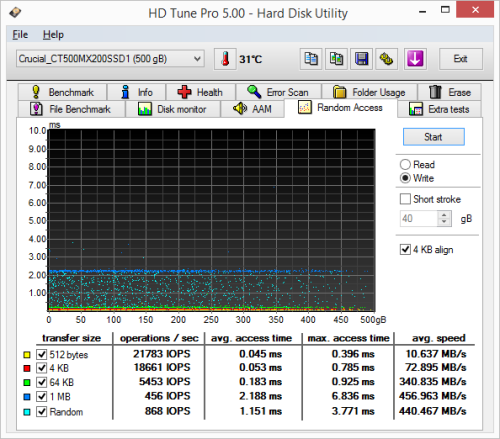

Model: Crucial MX200 500GB Solid State Drive
Manufacturer: Crucial
Provided By: Crucial
Crucial is a global brand of Micron Technology, Inc., one of the largest memory and flash storage manufacturers in the world. The company's product lineup includes award-winning solid state drives (SSDs) and computer memory upgrades (DRAM) for more than 50,000 systems. These products have been qualified and approved by major original equipment manufacturers and every single module has been rigorously tested at the component and module level. Each SSD also undergoes over a thousand hours of prerelease validation testing and hundreds of qualification tests to ensure optimal reliability and performance.
Earlier this year, Crucial introduced two new consumer-oriented SSDs. Along with the fast, yet affordable BX100, the company launched its latest mainstream SSD, the MX200. Powered by Marvell's 88SS9189 controller and available with up to 1TB of Micron's 16nm 128gb NAND, the drive delivers 550MB/s read and 500MB/s write speeds on both compressible and incompressible data. The MX200 also offers a long list of features including AES 256-bit encryption, thermal and power loss protection, TRIM support and active garbage collection. The drive is also equipped with Crucial's new Dyamic Write Acceleration technology, which uses an adaptable pool of high speed, single-level cell flash memory to enable faster saves and file transfers. Additionally, it uses technologies like Data Defense and Redundant Array of Independent NAND (RAIN) to increase security and protection of data to a level that’s not typically found in consumer-class SSDs.
The MX200 is available in 250GB, 500GB and 1TB capacities. For this review, Crucial sent us the 500GB version of the drive which is capable of delivering up to 555 MB/s sequential read and 500 MB/s sequential write speeds as well as up to 100,000 random read and 87,000 random write IOPS.
| Crucial MX200 500GB Solid State Drive | |||||||||||||||||||||||||||
General Specifications
Performance
Reliability
Environmental
Other Features
|
Needless to say, this is only a taste of what the MX200 has to offer. To give you an idea of what to expect, we'll take a closer look at Crucial's new SSD and then see how well it performs. Does the MX200 have what it takes? Can it deliver the performance and features that we've come to expect from Crucial? Keep reading as we find out.
The MX200 comes in a small, blue box. While there aren't a lot of technical details, the front and back of the box show the drive from a few different angles and provide information like the capacity and a list of the box's contents. Inside, you'll find the SSD, a mounting spacer for use with traditional 9.5mm drive bays, and a small piece of paper with a software activation key for Acronis True Image HD. If you're looking for an install guide or warranty information, you will need to visit Crucial's support website.

Physical Features:
The MX200 looks very similar to Crucial's other 2.5-inch SSDs. The outer casing is made entirely out of metal and is covered by a grey, textured finish. The top of the drive also has a large, blue and gray sticker showing that it is part of Crucial's MX series.


Like Crucial's MX100 SSD, the MX200 uses Marvell's 88SS9189 controller. This successor to the popular 88SS9187 offers a handful of improvements including LPDDR memory support and enhanced power management during sleep mode (DevSleep).


For the 500GB version of the MX200, Crucial opted to use Micron's 16nm 128Gb MLC NAND flash. Looking at the picture above, you can see that there are eight 64GB NAND flash packages on top of the PCB. The drive also has a 512MB Micron DDR3 memory chip that is used for caching.
The test system used in this review was an HP 8200 Elite. The computer came equipped with an Intel Core i5-2400 CPU, 4GB of DDR3 1333MHz memory, Seagate Barracuda 7200.12 ST3250312AS 250GB SATA 6 Gb/s hard drive, NVIDIA Quadro FX580 512MB PCIe graphics card and an Intel 82579-LM gigabit network card. For the operating system, I installed a fresh copy of Windows 7 Enterprise.
To test the performance of the Crucial MX200, I ran a series of benchmarks using CrystalDiskMark 3.0.1, HD Tach RW 3.0.4.0, ATTO Disk Benchmark 2.46, AS SSD, HD Tune Pro 5.00, Anvil's Storage Utilities and Iometer. For comparison, I've also included test results from the OCZ Vector 180, Crucial BX100, Samsung 850 EVO M.2, Samsung 850 EVO mSATA, AMD Radeon R7, Silicon Power Slim S80, Samsung SSD 850 EVO, OCZ ARC 100, SanDisk Ultra II, Crucial MX100, SanDisk Extreme Pro, Samsung SSD 850 PRO, Plextor PX-256M6S, Toshiba Q Series Pro, Plextor PX-256M6M, Samsung SSD 840 EVO mSATA, OCZ Vector 150, OCZ Vertex 450, Silicon Power Slim S55, Samsung SSD 840 EVO, Seagate 600 SSD, SanDisk Extreme II, OCZ Vector, Plextor PX-256M5Pro Xtreme, and Samsung SSD 840 Pro.

As I mentioned earlier, the MX200 is based on Marvel's 88SS9189 controller chip. Looking at the screenshot above, you can see that it performs equally well with both incompressible (0%) and compressible (100%) data.
CrystalDiskMark 3.0.3:
First, I ran a few quick tests using CrystalDiskMark. This benchmark tool measures the performance of a storage device by testing its sequential read and write speeds as well as its random read and write speeds using blocks 512K and 4K in size.
According to Crucial, the 500GB MX200 is capable of reading at 555 MB/s and writing at 500 MB/s when connected to a SATA 6 Gb/s port. While the drive performed well, it came up a bit short of these numbers in CrystalDiskMark's sequential read and write speed tests.
The MX200 performed equally well when using highly compressible 0x00 (0 Fill) data. This time around, the drive was able to read at 480.9 MB/s and write at 472.3 MB/s.
HD Tach RW 3.0.4.0:
Next, I used HD Tach to test the MX200's read, write and burst speeds as well as its seek times and CPU usage.

Crucial MX200 500GB
Looking at the screenshot above, you can see that the MX200 had average read and write speeds of 394.5 MB/s and 384.1 MB/s respectively, as well as a burst speed of 381.0 MB/s.
ATTO Disk Benchmark 2.46:
I also used ATTO Disk Benchmark to test the MX200's sequential read and write speeds. The tests are run using blocks ranging in size from 0.5KB to 8192KB and the total length set to 256MB.
When tested with ATTO, the MX200's read speeds topped out at about 547 MB/s and its write speeds at 513 MB/s.
AS SSD:
AS SSD is a relatively new benchmark designed specifically for solid state drives. The application contains five synthetic tests used to determine the sequential and random read and write performance of a drive.
AS SSD also includes a copy benchmark. This test copies an ISO (two large files), program (many small files) and game (small and large files), returning the speed and duration of each.
HD Tune Pro 5.00:
Next, I ran a series of tests using HD Tune Pro. This hard disk utility measures a drive's performance by testing its sequential read and write speeds as well as its access time, burst rate and CPU usage. For this review, I'm also going to use it to benchmark the MX200's random read and write speeds, random access times and the number of operations per second.
The MX200 performed fairly well when benchmarked with HD Tune. The drive had average read and write speeds of 500.5 MB/s and 458.3 MB/s, respectively, and a burst rate of 268.9 MB/s when writing.
The MX200 didn't disappoint when doing random reads and writes. When writing 4KB blocks, the drive reached 18,661 IOPS and had an average speed of 72.895 MB/s. The MX200 was slightly faster when reading, reaching 22,190 IOPS with an average speed of 86.682 MB/s.
Anvil's Storage Utilities:
Anvil's Storage Utilities is another new benchmark designed with SSDs in mind. The standard storage benchmark measures a drive's performance by testing its transfer speeds, access times and IOPS.

Iometer:
Lastly, I ran a series of tests using Iometer. This tool can be configured to benchmark a number of things. In this case, I used it to measure the MX200's read and write speeds and the number of operations per second. The tests were run using random bytes and a queue depth of 3.

The MX200's performance was very similar to what we saw in our other tests. The drive was able to read at 534.59 MB/s and write at 488.06 MB/s.

The MX200 also performed very well when doing random reads and writes. In our tests, the drive was able to read at 148.63 MB/s and write at a blazing 346.63 MB/s.

According to Crucial, the MX200 is capable of 100,000 IOPS when reading and 87,000 IOPS when writing 4K blocks. In our tests, the drive reached 38,050 random read IOPS and 88,737 random write IOPS. Increasing the queue depth had little impact on the MX200's random write performance. However, with the queue depth set to 32, the drive was able to reach 88,769 random read IOPS.
Vantage PCMark 8 - Storage Test:
PCMark 8 is a complete benchmark for Windows. It includes five benchmark tests, each designed around a specific scenario. The storage benchmark measures drive performance using real-world traces recorded from Adobe Creative Suite, Microsoft Office and a selection of popular games.

PCMark 8 also includes a consistency test which measures the performance consistency and degradation tendency of a storage system. The test reports the performance level at the start, the degraded steady-state and the recovered state as well as the number of iterations required to reach the degraded state and the recovered state. For this test, we are focusing on the Adobe Photoshop (Heavy) trace and will look at both the bandwidth and latency of the drive


The MX200 didn't do as well as I expected in this test. Like the Samsung EVO, its bandwidth dropped below 100 MB/s during the degradation phases. However, it never really recovered, topping out at a mere 110 MB/s.
TRIM Performance:
While SSD's offer many benefits, there are some downsides to using flash memory. One of the biggest issues people run into is performance degradation. Over time, an SSD will run out of fresh blocks and will have to write over data the file system has marked as deleted. This procedure is very complicated and can slow an SSD's write speeds considerably.
To fix this problem, most manufacturers have added TRIM support to their SSDs. The TRIM command allows an operating system, such as Windows 7, to tell an SSD which data blocks are no longer in use. Using this information, the drive pro-actively erases these blocks and adds them to the free block pool.

To test the MX200's TRIM and garbage collection functions, I first put the drive in a "dirty" state. I used Iometer to fill the entire drive and then ran a random write test for 30 minutes. Looking at the screenshot below, you can see that the MX200's average read and write speeds dropped to 163.1 MB/s and 50.1 MB/s, respectively.

Crucial MX200 - Dirty
I let the computer sit for about an hour and a half and then reran the test. Looking at the screenshot below, you can see that the Crucial MX200's average write speed had increased to 66.0 MB/s. Needless to say, this was not the result I expected, especially when you consider how well the MX100 and BX100 did in this test.

Crucial MX200 - After TRIM
With this in mind, I went back and reran the test using AS SSD instead of HD Tach. AS SSD isn't as low level as HD Tach nor does it produce a nice looking graph. However, it does let us test a drive's read and write speeds without having to delete the volume. I used Iometer to fill 80% of the drive and then ran a random write test for 30 minutes. This had very little effect on the drive's read speed. However, its sequential write speed dropped to 132.17 MB/s

Crucial MX200 - Dirty
I let the computer sit for about 60 minutes and then reran the test. The MX200 wasn't able to reach the factory fresh performance shown in our earlier tests. However, its average write speed climbed up to 196.76 MB/s.

Crucial MX200 - After TRIM
Lastly, I used Parted Magic to perform a secure erase on the MX200. With the drive wiped clean, it had average read and write speeds of 507.05 MB/s and 475.74 MB/s, respectively.

Crucial MX200 - Secure Erase
Final Thoughts:
Crucial's MX200 is a great choice for the consumer or enthusiast looking for an SSD that delivers excellent performance, innovative features and long term endurance. Like its predecessor, the MX100, the drive combines Marvell's 88SS9187 controller with Micron's 16nm 128gb NAND flash to produce some impressive performance numbers. In our sequential read and write tests, the MX200 was able to read at speeds as high as 547 MB/s and write at speeds in excess of 471 MB/s. It also did very well in our random write tests, producing more than 88,000 IOPS at low queue depths. That being said, the MX200 did have some problems recovering once it was filled with data and put in a "dirty" state. This is something that the average consumer will probably never run into. However, as an enthusiast, I hope that Crucial will address this in a future firmware update.
Fast read and write speeds aren't the only things the MX200 has to offer. Along with thermal and power loss protection, TRIM support and active garbage collection, the drive features AES 256-bit full disk encryption and is compatible with both the TCG Opal and IEEE 1667 specifications. The MX200 also uses Dynamic Write Acceleration to enable faster saves and file transfers, and technologies like Data Defense and Redundant Array of Independent NAND (RAIN) to guard against corruption and protect your data. Last, but not least, the MX200 supports the SATA Device Sleep (DEVSLP) standard which extends the battery life of a device by reducing the drive's power consumption when it's not in use.
The MX200 is available now in 250GB, 500GB and 1TB capacities. Prices on Amazon.com and Pricegrabber currently range from $110 up to $444, with the 500GB version reviewed here going for about $200.
Highs:
- Available in 250GB, 500GB and 1TB capacities
- Excellent sequential read and write speeds
- Very good random read and write performance
- Performs equally well with compressible and incompressible data
- SATA 6Gb/s interface
- Large DRAM cache
- Dynamic Write Acceleration, Data Defense and RAIN technologies
- AES 256-bit full disk encryption
- TCG Opal and IEEE 1667 compliant
- DEVSLP power mode
- Supports TRIM, SMART and active garbage collection
- Thermal and power loss protection
- Ultra-slim form factor
- Includes mounting spacer for 9.5mm applications
- 3 year warranty
- Reasonably priced
Lows:
- Performance is slow to recover once it has reached a "dirty" state
